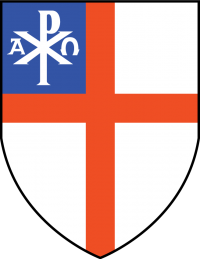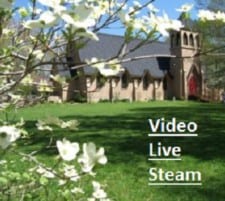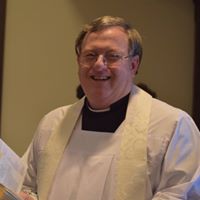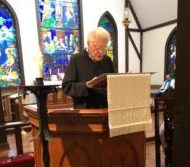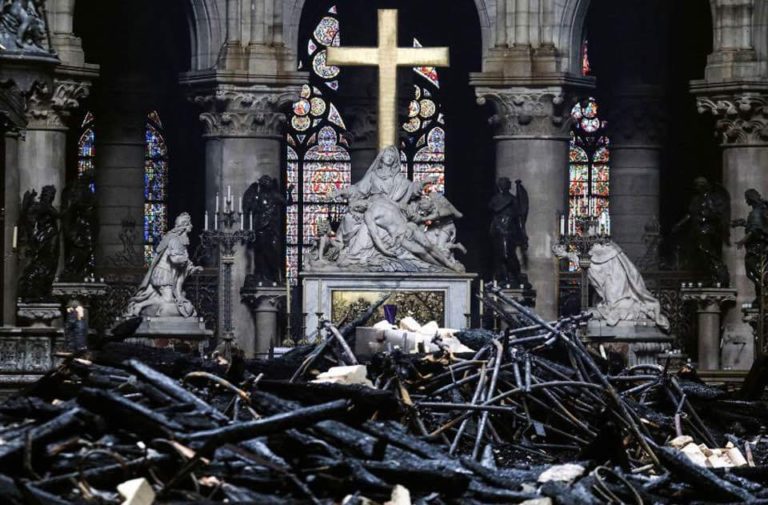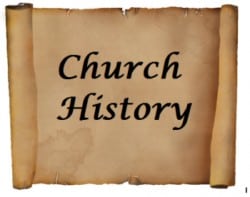Confirmation Manual (blog edition) 2019 Part 2 of 10
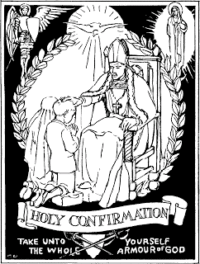
CHAPTER 2
From Catholic to Protestant and back again:
Henry VIII (to Catholic); Edward (to Protestant); Mary (to Catholic).
Also a few Continent Reformers added in and HERE WE GO!!!
Mary Tudor: (1516-1558)
England’s first female monarch, Mary I ruled for just five years. The only surviving child of Henry VIII and his first wife, Catherine of Aragon, Mary took the throne after the brief reign of her half-brother, Edward VI. She sought to return England to the Catholic Church and stirred rebellions by marrying a Spanish Habsburg prince.
After taking the throne her ruling council was a mix of Protestants and Catholics, but as her reign progressed she grew more and more fervent in her desire to restore English Catholicism. Mary soon moved from simply reversing her father’s and Edward’s anti-Catholic policies to actively persecuting Protestants. In 1555 she revived England’s heresy laws and began burning offenders at the stake, starting with her father’s longtime advisor Thomas Cranmer, the archbishop of Canterbury. Almost 300 convicted heretics, mostly common citizens, were burned (thus earning the name “Bloody Mary.” Dozens more died in prison, and some 800 fled to Protestant strongholds in Germany and Geneva, from whence they would later import the Calvinist tenants of English Puritanism.
Of note – sometimes confused:
Mary, Queen of Scots: (1542-1587)
Mary was one of the most fascinating and controversial monarchs of 16th century Europe. At one time, she claimed the crowns of four nations – Scotland, France, England and Ireland. Her physical beauty and kind heart were acknowledged even by her enemies. Yet she lacked the political skills to rule successfully in Scotland. Her second marriage was unpopular and ended in murder and scandal; her third was even less popular and ended in forced abdication in favor of her infant son. She fled to England in 1568, hoping for the help of her cousin, Elizabeth I. Her presence was dangerous for the English queen, who feared Catholic plotting on Mary’s behalf. The two queens never met and Mary remained imprisoned for the next nineteen years. She was executed in 1587, only forty-four years old. By orders of the English government, all of her possessions were burned. In 1603, upon Elizabeth’s death, Mary’s son became king of England as James I.
Elizabeth I: (1553-1603)
The Anglican Settlement:
Elizabeth I Queen of England from 1558, daughter of Henry VIII and Anne Boleyn. The long reign of Elizabeth, who became known as the “Virgin Queen” for her reluctance to endanger her authority through marriage, coincided with the flowering of the English Renaissance, associated with such renowned authors as William Shakespeare. By her death in 1603, England had become a major world power in every respect, and Queen Elizabeth I passed into history as one of England’s greatest monarchs.
In Parliament of 1559 she sought to achieve a royal supremacy and the restoration of the 1552 Book of Common Prayer which made a few concessions to Catholics. She reintroduced a crucifix in her chapel, contemplated a prohibition of clerical marriage, tried to insist on traditional vestments and probably had some last minute modification the Thirty Nine Articles of Religion in 1563.
Although political realities often made her cautious, Elizabeth posed as the restorer of the Gospel and the patron of Protestant as she sent military aid to Protestant rebels in Scotland in 1560, France in 1562, and the Netherlands in 1585. Elizabeth’s collection of private prayers suggests a genuine Protestant piety and a commitment to the doctrine of justification by faith alone. From 1583 Elizabeth turned more decisively against English Catholics, partly for fear of plots. Persecution of Catholics was vigorous in 1585-1591 and in 1587 Elizabeth reluctantly allowed the execution of her cousin Mary Stuart (Mary Queen of Scots – see above) who had been a focus of Catholic planning. Her image as Protestant “protect-ress” helped her to overcome suspicion of female rule, and made anti-popery a powerful national ideology.
The Marian (followers of Mary) exiles had an impact upon the Elizabethan Church. The Marian Exiles were English Protestants who fled to the continent during the reign of Queen Mary I. They settled chiefly in Protestant countries such as the Netherlands, Switzerland and Germany, but also in France and Italy. Elizabeth had been raised as a Protestant in the household of Catherine Parr. During the first year of Elizabeth’s reign many of the Marian exiles returned to England. A compromise religious position established in 1559 is now known as the Elizabethan Religious Settlement. It attempted to make England Protestant without totally alienating the portion of the population that had supported Catholicism under Mary. While the Elizabethan Settlement proved generally acceptable, there remained minorities who were dissatisfied with the state of the Church of England. In particular cry for “further reform” in the 1560’s was the basis of what is now known as the Puritan Movement.
Martin Luther: (1483–1546)
In 1517, nails his 95 Theses onto a Wittenberg Church door. These theses were Latin propositions opposing the manner in which indulgences (release from the temporal penalties for sin through the payment of money) were being sold in order to raise money for the building of Saint Peter’s in Rome.
Diet of Worms (Imperial council): In 1521 was made famous by Martin Luther’s appearance to respond to charges of heresy. Pope Leo X had condemned 41 propositions of Luther’s, but he also had given Luther time to recant. Because Luther refused to recant, he was excommunicated on January 3, 1521. While the emperor should then have arrested and executed Luther, the intervention of Luther’s ruler, Elector Frederick III the Wise, brought the decision that he would appear for a hearing at the Diet under the emperor’s safe-conduct. On April 17, 1521, Luther went before the Diet for the first time. In response to questioning, he admitted that the books displayed before the court were his, but, when asked to repudiate them, he asked for time to consider the question. The next day, again before the assembled Diet, Luther refused to repudiate his works unless convinced of error by Scripture or by reason. Otherwise, he stated, his conscience was bound by the Word of God. According to tradition, he said, “Here I stand; I can do no other.” Disorder broke out at the conclusion of Luther’s refusal to recant, and the emperor dismissed the Diet for the day proclaiming Luther to be a heretic and banned the reading or possession of his writings.
Zwingli: (1484–1531)
Swiss theologian and leader of early Reformation movements in Switzerland. Vigorously denounces the sale of indulgences in 1518. He and Luther had differences over the Eucharist and were unable to resolve their differences in Marburg.
John Calvin: (1509-1564)
Genevan Reformer who in 1536 published his first edition of The Institution of the Christian Religion (Institutes) which was a defense of Reformation beliefs. After being ran out of Geneva, he was then invited back in 1541. Calvin spent much time trying to settle the differences within the Protestant movement and was a leading proponent of predestination and reprobation.
The Caroline Divines
A school of Anglican preachers and theologians living under King Charles I, the Interregnum and Charles II are known collectively as the Caroline Divines. During the “reforming” era, the Caroline Divines sought to return the Church to its original position during the 1st, 2nd, and 3rd centuries. Selected writings of the Caroline Divines were collected by adherents of the Oxford Movement and published in the extensive (and never completed) Library of Anglo-Catholic Theology. The key figures of the Divines were: Richard Allestree, Lancelot Andrewes, Ralph Brownrigg, King Charles the Martyr, Brian Duppa, Mark Frank, Henry Hammond, George Herbert, Peter Heylyn, William Laud, Robert Sanderson, Jeremy Taylor, Izaak Walton.
Richard Hooker: Used the terms: Scripture, Tradition, & Reason for support of “the via media.)
Bible in English, John Wycliffe (1330-1384)
He attacked what he saw as corruptions within the church, including the sale of indulgences, pilgrimages, the excessive veneration of saints, and the low moral and intellectual standards of ordained priests. Wycliffe also repudiated the doctrine of transubstantiation, held that the Bible was the sole standard of Christian doctrine, and argued that the authority of the Pope was not grounded in Scripture. Some of Wycliffe’s early followers translated the Bible into English, while later followers, known as Lollards, held that the Bible was the sole authority and that Christians were called upon to interpret the Bible for themselves.
CHURCH HISTORY: PART I THE ENGLISH HERITAGE
Illumination: English Christianity existed as a distinctive branch of the tree of the apostolic Church from the earliest times of the Christian era. It synthesized Celtic practices and Roman practices into a distinct Ecclesia (latin word: ekkesia meaning “assembly or congregation) Anglicana long before the Reformation.
The first British Christians were Romans, but with the withdrawal of the Romans from England in the Fifth century, Christianity survived in the Celtic areas of the west of England, Ireland, and Scotland. In the centuries during which Celtic Christianity was separated from Roman, the Celts developed a distinctive form of monasticism and church polity and spirituality centered on creation and the cross.
In 597, when Pope Gregory the Great sent Augustine of Canterbury to evangelize the English, there was a centuries-old Celtic church flourishing in Ireland and Scotland. In 664 at the Council of Whitby, the King of Northumberland accepted the Roman date for Easter rather than the Celtic, and the two branches began to grow together in Great Britain. During the next centuries, monasteries adopted a characteristic Benedictine (following the rule of life of St. Benedict) spirituality.
From the Norman conquest of 1066 to Henry II’s controversies with his Archbishop of Canterbury Thomas Becket a century later (as Becket became devotedly austere and embraced the Pope once Becket became the see of Canterbury), to John’s confrontation with Archbishop Stephen Langton that led to the Magna Carta, to Henry VIII’s displeasure with his Chancellor Thomas More, the relationship of Crown to Church was never easy, but the distinctively English character of the Church was never in question.
The Sixteenth-Century Reformation in England was different in character from the Continental Reformation, neither Lutheran nor Calvinist, though affected by both. In England, the Reformation was a political event, expressive of an emerging English national feeling. The Parliament in 1534 passed the Act of Supremacy making the King the Head of the Church in England as the culmination of a series of laws rejecting various claims to entitlement of the Bishop of Rome.
Henry VIII did not favor Continental Protestant ideas, and did not start the Church of England; he considered himself an English Catholic. His Archbishop Thomas Cranmer was affected by Lutheran ideas, but during Henry’s reign (1509-47) was able to persuade the King only to authorize the writing of the Great Litany in English and the placement of an English Bible in churches. The mass remained in Latin and priests remained celibate.
Lutheran and Calvinist ideas did have their day during the brief reign of Edward VI, Henry’s son, and it was during this period the first English Book of Common Prayer (1549) was issued, making worship uniform throughout the realm. The Protestant direction of the Edwardian reform was halted with the accession in 1553 of Mary, who returned England to the Latin mass and allegiance to the Pope.
When Mary died and Elizabeth I inherited in 1558, the distinctively Anglican via media or middle way was an expression of her policy. Elizabeth maintained the continuity of apostolic succession through the consecration of her Archbishop Matthew Parker. A national English Church outside the authority of Rome or Geneva survived. The Anglican Settlement of Elizabeth is more important in shaping modern Anglicanism than anything done by Henry VIII.
One important religious and cultural monument of the Reformation that does owe a good deal to Continental Protestant influences was the translation into English of the Bible. From John Wyclif and William Tyndale to the various translators of the Reformation era, and finally to the Authorized Version or King James Bible of 1611 (of which a key contributor was Lancelot Andrewes who was one of the leading Bishops of the Anglican Divines), the English Bible emerged as a literary masterpiece and cherished national treasure of the English Church.
In the 1580’s Richard Hooker offered the classical defense of the Anglican middle way in his work The Laws of Ecclesiastical Polity, holding that the English Church, continuous with the apostolic Church, was both Catholic and reformed and rejecting the claims both of Rome and of the increasingly influential Puritans. Hooker offered the English a way of understanding Church authority as based on Scripture, Tradition, and Reason.
Under the early Stuart kings James I and Charles I, Puritanism grew and increasingly challenged royal authority in ecclesiastical as well as legislative and financial affairs. The influence of Calvinism led the Puritans to understand the Church as a gathering of the elect and to reject episcopacy. These challenges culminated between 1642 and 1649 in a civil war between the Puritan-led Parliament and the forces of Charles I. For a time in the 1650s, the Puritans under Oliver Cromwell abolished the episcopate as well as the monarchy, substituting a Presbyterian form of government for the Church and a Commonwealth for the king. However with the restoration of the monarchy under Charles II in 1660, the historic episcopate and the Anglican settlement were restored as well.
Through these troubled times, the English Church moved back and forth in response to the political changes, but its continuity was never broken and the Elizabethan via media endured. Stemming from its multivalent past, a national Church of England held together faithful believers with many convictions ranging from Anglo-Catholic (“High Church”) to Evangelical (“Low Church”), but an English national Church continued to govern itself through bishops and worship together according to the Book of Common Prayer.
CHURCH HISTORY: ENGLISH HERITAGE
Looking forward: The Church in America grows out of the English colonial experience, undergoes a catastrophe during the American Revolution, and revives to become an important part of American religious life. But the American Church must adapt to the conditions of a republic, a moving frontier, and the emergence of a democratic society.
CHURCH HISTORY: THE AMERICAN CHURCH
General themes: The Church of England was established in some colonies, and Puritan churches in others. In the colonial era, there were no American bishops, and the Church appeared to many colonists to be a political tool of the monarchy. The American Revolution disestablished the Church and almost eliminated its clergy in many areas.
General themes:
Maintaining apostolic succession, American Anglicans established an American episcopate at the conclusion of the Revolution and created for the first time an Anglican polity appropriate to a republic, with a General Convention, elected bishops and lay leaders. The Church lost much ground to other churches in the generation after the Revolution by maintaining an approach to parish life more appropriate to a settled stable society than a nation of pioneers and immigrants; however, a new generation of leaders after 1820 began to plant churches and move westward. Only briefly divided by the Civil War, the Episcopal Church was instrumental thereafter in turning the attention of Christians to the problems of a new industrial society. Different flavors of Episcopalian liturgy stressed the Catholic and/or Protestant heritage, but the Church remained bonded by its common worship.
CHURCH HISTORY: PART II THE AMERICAN CHURCH
Introduction: The themes of the Anglican way had emerged by the 17th century: a national church, common prayer, apostolic faith, incarnational theology, and the via media. How will these inheritances from the English experience be challenged by and adapted to the conditions of a democratizing American society in a federal, republican polity?
The Church of England was never established in all the English colonies, and no bishop was ever consecrated for the colonial Church. The colonial Church experienced the consequences of separation, losing its privileged position in some colonies and many of its clergy everywhere. In the years immediately after the American Revolution, the Church in America had to re-think what it meant to be an Anglican without being English, an Anglican in an American republic. It was slow to adapt to the conditions of a growing and democratizing nation moving westwards. It did not learn how to grapple with these new realities quickly, but a new generation of American bishops after the 1820’s was able to establish a secure place for the Episcopal Church in the United States.
Background: The Church of England came to the English colonies in North America with the first settlers at Jamestown, Virginia, in 1607. Since the New England colonies were the creation of Puritans dissatisfied with the established Church at home, they were never Anglican, but the southern colonies gave a privileged position to the established Church of England.
During the two and a half centuries from 1607 to 1776, the English never consecrated a bishop for America, and even in the southern colonies there were many Anglicans who were not eager to see them appointed, since they were regarded as unwelcome extensions of royal authority. Laymen on vestries acquired much greater control over their clergy and parish affairs than in England.
The American Revolution was at first a disaster for the Church. Identified as it was with the mother country, having a clergy dependent upon episcopal oversight from London, worshipping according to a form that required prayers for the King at every service, it was the target of laws disestablishing it where it had been established and limiting it where it was not. Many clergy fled to England or Canada and left their congregations without pastors and without the sacraments. At the end of the war, with British recognition of American independence, it was not clear how a Church of England could continue to exist in an American Republic.
Samuel Seabury: (1729 – 1796)
“A crucial date for members of the Episcopal Church in the United States of America is the consecration of the first Bishop of the Anglican Communion in the United States. During the colonial era, there had been no Anglican bishops in the New World; and persons seeking to be ordained as clergy had had to travel to England for the purpose. After the achievement of American independence, it was important for the Church in the United States to have its own bishops, and an assembly of Connecticut clergy chose Samuel Seabury to go to England and there seek to be consecrated as a bishop.
However, the English bishops were forbidden by law to consecrate anyone who would not take an oath of allegiance to the British Crown. He accordingly turned to the Episcopal Church of Scotland, which had no connection with the government (having originated around 1690 with the non-Jurors: those Anglicans who, having sworn allegiance to James Stuart, would not during his lifetime swear allegiance to William of Orange, and who were accordingly all but outlawed under the new dynasty), and was accordingly free to consecrate him without political complications.
In Aberdeen, 14 November 1784, Samuel Seabury was consecrated to the Episcopate by the Bishop and the Bishop Coadjutor of Aberdeen and the Bishop of Ross and Caithness. He thus became part of the unbroken chain of bishops that links the Church today with the Church of the Apostles. In return, he promised them that he would do his best to persuade the American Church to use as its Prayer of Consecration (blessing of the bread and wine at the Lord’s Supper) the Scottish prayer, taken largely unchanged from the 1549 Prayer Book, rather than the much shorter one in use in England.” http://justus.anglican.org/resources/bio/282.html
First bishop of the Protestant Episcopal Church in the United States. Samuel Seabury was educated in medicine at Yale University and the University of Edinburgh. After he became a priest in 1753, he served parishes in New Brunswick, New Jersey, in Jamaica, New York, and in Westchester, New York; he also practiced medicine. He became known for his pamphlets urging Americans not to seek independence from the British crown, which evoked pamphlets in reply by the young Alexander Hamilton. Seabury was a loyalist during the American Revolution, moving to British-occupied New York City. In 1783 he was elected bishop of Connecticut and Rhode Island. He went to Scotland to be ordained and then returned to the United States in 1785. In that same year he became rector of St. James’ Church in New London, Connecticut. When Samuel Seabury went to England to seek consecration as a bishop, the English bishops were not legally able to lay hands upon anyone who could not pledge loyalty to the King of England. The answer was to turn to the Episcopal Church in Scotland, whose bishops consecrated Seabury in 1787. His Consecrators were Robert Kilgour, 39th Bishop of Aberdeen; Arthur Petrie, 37th Bishop of Moray, Ross and Caithness; John Skinner, coadjutor Bishop of Aberdeen.
Now that the historic episcopate had been brought to the United States, William White of Philadelphia, soon consecrated a bishop himself (in England), led the effort to design an American church suited to the new republic, and in 1789 the Protestant Episcopal Church in the U.S.A. was created, with a governing structure based on the model of the Federal Constitution, combining lay and clerical leadership, with a Presiding Bishop and a General Convention made up of a House of Bishops and a House of Delegates.
The infant American Church existed in the doldrums as the new century opened. Its parish-level organization was suited for a stable society, but Americans were on the move. Protestant denominations with their circuit-riding preachers laid the foundations for large Methodist, Baptist, and Presbyterian Churches while the Episcopal Church remained small. Only with a new generation of leaders such as Bishops William Henry Hobart and Jackson Kemper did the domestic mission of the Church find proper expression.
Briefly divided by the Civil War, the Episcopal Church found it easier to reunite afterwards than many other denominations because its unity came through common worship and prayer and the episcopacy. Even as Protestantism continued to give rise to new religious groups in America, the Episcopal Church remained largely intact. There were, however, multiple influences acting on the Episcopal Church from the Oxford movement to Liberal theology, the Broad Church movement, and the Social Gospel. The Catholic revival notably enriched the liturgy and led to a Gothic revival in church buildings. High Church and Low Church parties differed in their emphases but remained within the same Episcopal Church structure.
As America industrialized and large numbers of immigrants arrived from central and eastern European lands, and as slavery disappeared, to be replaced by racial segregation, the religious makeup of the nation changed quickly. At the same time, industrialism and racism presented new problems and opportunities for the American Church. Anglicans were prominent in the Social Gospel movement of the late 19th and early 20th centuries, and they struggled with the question of race relations and mission to African-Americans and Native Americans. In the late 19th century, American Episcopalians also began to play a significant role in foreign mission work in Latin America, the Caribbean, the Philippines, and China.
Having pioneered in the development of a non-English Anglicanism, American Anglicans also played a role in the evolution of the Anglican Communion as other former colonies of Great Britain acquired self-government and looked to the American Church as a model of how to retain an Anglican identity outside a colonial relationship with England.
In the twentieth century, the Church avoided the internal schisms that Protestant denominations often faced in the battle over a literal understanding of scripture and the issue of evolution. In the first half of the century, the Church was generally conservative, and its membership was largely middle and upper-class.
After World War II the Church experienced tremendous growth, reaching 3.4 million members by 1960. The controversies since that time have split the church as it has drift away from its past and the doctrines of its foundation.
